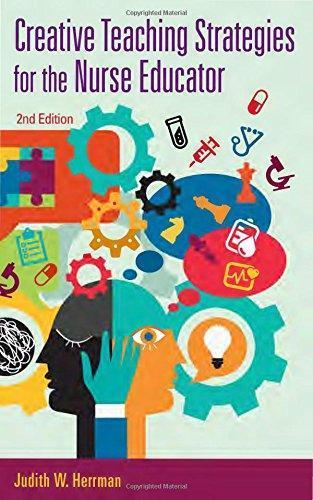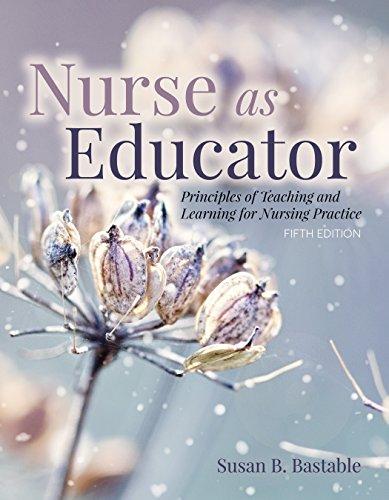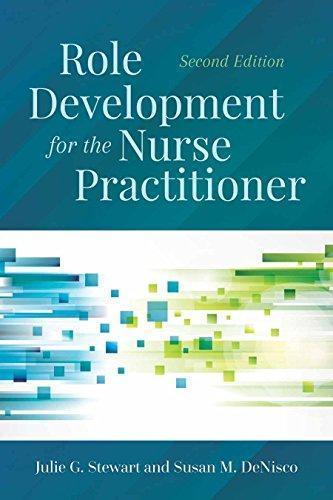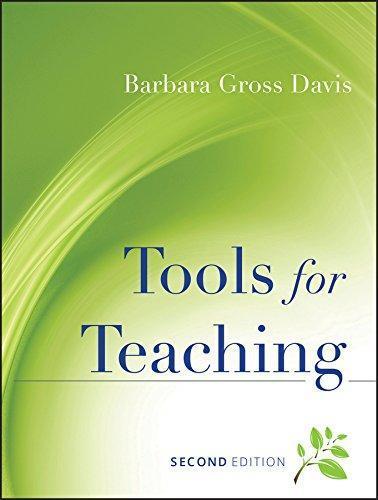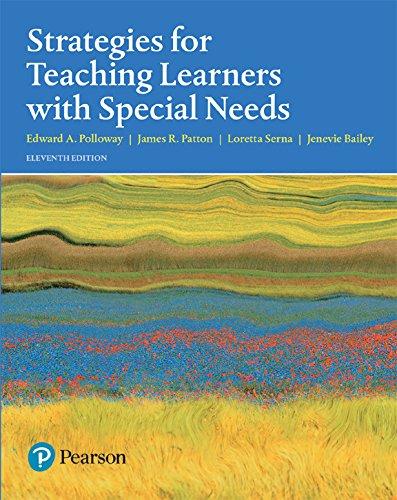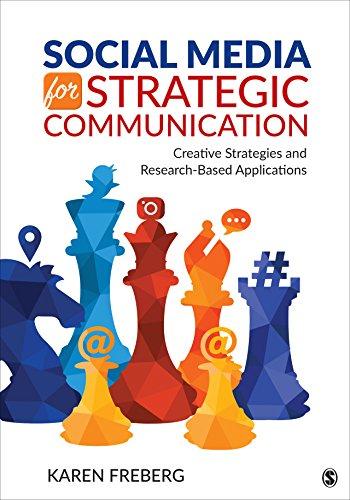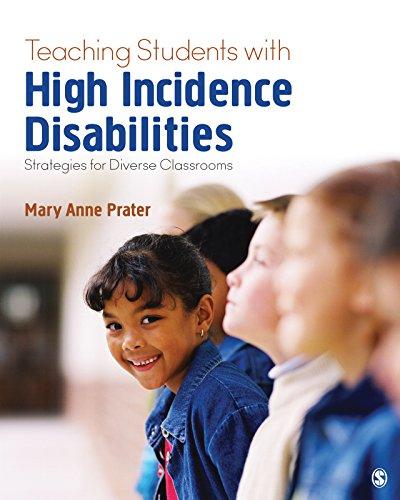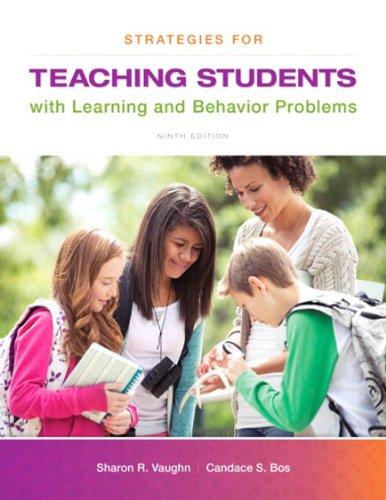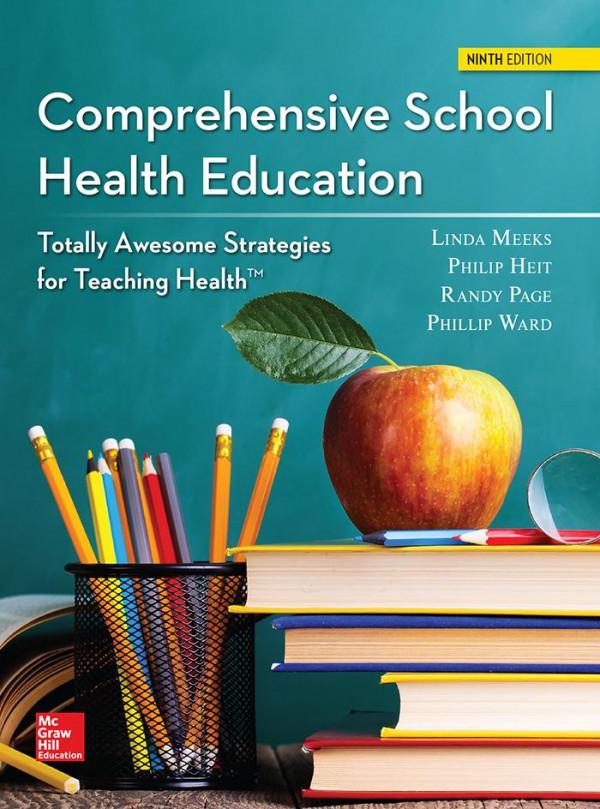Creative Teaching Strategies tor the Nurse fducator
2nd Edition


Whenever a task comes to a close, one considers all those who helped make the project happen. For this initiative the list is long! I would like to thank Joanne DaCunha and those at F. A. Davis for their support and guidance. I would like to offer sincere thanks to my talented colleagues who inspired many of the strategies in this text. Years of teaching classes and working with creative and energetic nurses and nurse educators have offered many potential innovative teaching methods and a created a sincere desire to connect with students. This book reflects the talent and dedication inherent of nursing educators both in academic and practice settings. Finally, I would like to extend the greatest level of appreciation to my husband, my three sons, my three daughters-in-law, my three grandchildren, my parents, my friends, and my family. Their devotion, support, and love will continue to add meaning to my life and motivate me to continue to grow in my personal and professional endeavors.
Judith W. Herrman, PhD, ANEF, FAAN
1The Art of Innovation 1
“The art of teaching is the art of assisting discovery”
—Van
Doran
What is an Innovation? 2
How Do Innovative Strategies Enhance Learning? 2
What Are the Barriers to Innovative Teaching? 4
What Kind of an Instructor Are You? 6
Who Are the New Learners and How Do They Learn? 8
How Can you Use This Book? 11
2Getting Started with Icebreakers 15
“In the first minutes, you set the stage . . . you orchestrate how they talk to each other.” —Michelle Deck
Challenges 15
Ideas 16
Shapes Define Your Personality 16
Get in Line 18
Introduce Each Other 19
Why Are You in Nursing? and Other Mysteries 20
Let’s Discuss 21
Self-test: How Creative Are You? 23
Using Toys, Prizes, and Props 26
Starting with Games, Puzzles, and Brainteasers 29
Common and Different 31
Using Greeting Cards, Cartoons, and Pictures 32
Why Are You Here? 33
Critical Thinking Exercises 35
Dress-up or Skits 37
Tell ’Em Once, Tell ’Em Twice, Tell ’Em Again 39
Set the Stage 40
Setting Priorities 42
Past Experience with . . . 43
Be Prepared 44
My Biggest Challenge 46
Discussion Starters 47
3Strategies for Large Classrooms 49
“The mediocre teacher tells. The good teacher explains. The superior teacher demonstrates. The great teacher inspires.” —William Arthur Ward
Challenges 49 Ideas 50
Short Clips 50
Read a Story 51
Use the Star 53
Case Studies: Quickie 55
Case Studies: Preclass 56
Case Studies: Interspersed 58
Case Studies: Continuing 59
Case Studies: Unfolding 61
Use the Book 63
Worksheets 64
All Things Being Equal 67
When You Think of This. Think of That 69
Current Events 70
Bring In the Reinforcements and In-class Applications 72 Speak UP 75
Quotation Pauses 77
Group Thought 77
Using Mnemonics 83
Keep ’Em Awake Quizzes, Quickie Quizzes, Quizzes that Count 84
Feedback Lecture 87
4Strategies for Small Classes 91
“Implementing creative teaching strategies that will change a classroom from a four walled room with educational hopes into an environment that is infused with excitement, curiosity, and genuine student learning.” —Simplicio
Challenges 91 Ideas 92
Six Hats Exercise 92
In-basket exercise 94
The Right Thing To Do 97
Gaming 100
Imagine and Remember When 105 Twosies 107
What’s the Point? or What’s the Big Deal? 109
Jigsaw 111
Clinical Decision-making Exercises 113
Reality Check 121
Muddiest Part 123
In-class Test Questions 124
E-mail Exercises 128
Group Tests 132
Web Assignments 137
Student-led Seminars 138
Self-learning Mini-modules 140
Online Discussion Groups 142
Learning Contracts 144
Condensed Portfolios 145
5Strategies for Clinical Instruction and Orientation 149
“I take one minute a few times a day to look at my goals and see what I want to learn . . . . I can teach myself what I want to learn more easily by taking one minute to catch myself doing something right. . . . We are at our best when we teach ourselves what we need to learn.” —Johnson and Johnson Challenges 149
Ideas 150
Scavenger Hunts 150
Pass the Problem 153
Cooperative Strategies 155
Clinical Quick Write 157
One-Minute Care Plan 159
Ah-hah Journal 162
Creative Lab Skills 164
Equipment Conference 166
Active Reading Conference 168
Grand Rounds 169
V-8 Conference 171
Documentation Case Studies 173
Clinical Questioning 176
Use the Book in Clinical 179
Field Trips 180
Learning From Each Other 183
Clinical Puzzle 185
One-Minute Class 186
Film Clips in Clinical 188
Let’s Be Real in Clinical 192
6Strategies for Discussion Groups 197
“Shared perspectives, shared knowledge, and shared experiences are the key foundational building blocks of creativity.” —Simplicio
Challenges 197 Ideas 198
In-class Debate 198
Teaching Trios 200
Same Information 204
Think-Pair-Share 207
Admit Ticket 211
Write to Learn 213
Group Concept Mapping 216
War Stories and Clinical Anecdotes 218
Nuts and Bolts 221
Teaching Tools 224
Day in the Life of a Client with . . . 226
Invented Dialogues 227
Guided Discussion Groups 230
Out of the Hat 233
Legal Cheat Sheets 234
Mock Trials 236
Learning Carts 237
Pass the Stick 239
Put It All Together 240
FYI—Classroom Questioning 242
7Strategies for Teaching Research 247
“Education is not the filling of a pail, but the lighting of a fire.”
William Butler Yeats “The highest result of education is tolerance.” — Helen Keller
Challenges 247
Ideas 248
Market Research—Cookies, Candy, and the Research Process 248
How Do You Pick Your Shampoo? 249
Issues in Measurement 251
Reliability and Validity Darts 252
Mock Studies 252
Group Research Critique 254
Clinical Application of Findings to Case Studies 255
Research Moments in Every Class 257
Research Corners—Electronic or Bulletin Board 258
Film Clips in Nursing Research 259
Clinical Area Questioning—Research at Work 260
Paper Towel Ideas 261
Faculty Research Sharing 262
Poster Sessions 262
Research Concept Maps 263
Campus or Unit Research and Nurse Interviews 264 In the Know 265
Bring on the Evidence 267
Author Guidelines 268
8Creative Teaching Strategies to Enhance Clinical Decision Making and Test Taking 271
“A good teacher can inspire hope, ignite the imagination, and instill the love of learning.” —Brad Henry
Challenges 271
Strategies to Build Test-Taking Skills 272
Ideas 272
Assess Your Own Learning Style 272
Assessing the Learner 273
Write Your Own Test Questions 273
Alternate-Item Practice 274
Take Home Quiz on NCSBN Web site 274
Progressive Quizzes 275
Strategies for the NCLEX® RN and PN Examinations 277
Management of Care (RN)/Coordinate Care(PN) 277
Ideas 278
Case Management Case Studies 278
Incident Report Exercise 279
Delegation Exercise 280
Nurse Practice Act Write to Learn 281
“Call Bell” Examination Questions 282
Safety and Infection Control 284 Ideas 284
What Not to Do or Find the Error 284
Health Promotion and Maintenance 286 Ideas 287
Basics of Maternity Case Study 287
End of Life Case Studies—Documents to Help 288
Psychosocial Integrity 290 Ideas 291
Psychosocial Case Studies 291
Reduction of Risk Potential 293 Ideas 294
Perioperative Care Case Study 294
Pharmacology and Parenterals 295 Ideas 296
Pharmacology Field Trip 296
Pharmacology Critical Thinking Exercises 297
Basic Care and Comfort 298 Ideas 298
Pain Continuing Case Study 298
Physiological Integrity 299 Ideas 299
Two Truths and a Lie 299
What’s the Big Deal and How Is It Treated? 299
NCLEX® Integrated Processes 301 Ideas to Reinforce QSEN Principles 303
Patient/Family-Centered Care 303
Teamwork and Collaboration
Safety 305
Quality Improvement (QI) 306
Evidence-based Practices (EBP) 306
Informatics 307
Conclusion: A Charge to Nurse Educators 309
9Creative Evaluation Strategies 311
“Everything that can be counted does not necessarily count; and everything that counts can not necessarily be counted.” —Albert
Einstein
Challenges 311
Basics of Evaluation 312
Formative Evaluation 312
Summative Evaluation 312
Assessing Our Students 313
Classroom Assessment 313
Ideas 313
It Starts With the Syllabus 313
A Word About Examinations 314
Clinical Assessment 315
Ideas 315
Preclinical Case Studies 315
A Word About Assigning and Grading Written Work 317
A Word About Clinical Evaluation Tools 317 End of Program Assessment 319
Ideas 319
Clinical Preceptorships or Clinical Capstones 319
Student Self-Assessment 320
Ideas 320
Reflective Journaling 320
Conclusion: Newer Trends in Student Assessment 320
10Conclusion 323
“Teaching was the hardest work I have ever done, and it remains the hardest work I have done to date.” —Ann Richards
General Hints for Using Creative Strategies 324 Making Learning Fun 325
Advantages and Disadvantages of Creative Strategies 326
Finding the Teaching Fuel 326 Guidelines for PowerPoint 327
Evaluate Your Strategies 328 Some Words About Motivation 329
Annotated Bibliography 331
Strategy Locator 350
Index 355
Chapter 1 The Art of Innovation
“The art of teaching is the art of assisting discovery.”—Mark Van Doran
WHAT IS AN INNOVATION?
To examine creative teaching strategies clearly, we must define innovation and its relationship to teaching. Schell1 defines innovation as the use of nontraditional methods in learning settings. In essence, an innovation is any educational strategy not usually performed by the instructor or witnessed previously by a class.
Nowhere does this definition mention the extent or degree of creativity. Therefore the innovation doesn’t have to be major; any deviation, large or small, from custom is considered an innovation. Anything you haven’t done before or don’t usually do can fall within this category. It’s important to remember that any strategy new to the students is considered an innovation even if it isn’t new to you. Finally, the innovation lies not only in the teaching strategy, but in the method the individual nurse educator uses to present it.
Schell1 believes that innovative methods meet the needs of today’s nurses and nursing students. New methods can and should be used to enhance learning for nurses and to educate nursing students. Innovative strategies provide a foundation from which to design classroom activities, assignments, approaches to content, new ways to teach previously taught material, and evaluation methods. New nurse educators may find these creative methods helpful in developing their own teaching style. Instructors who have taught for several years, or who have taught the same material several times, may appreciate the need for novel, creative, and objective-driven strategies.
HOW DO INNOVATIVE STRATEGIES ENHANCE LEARNING?
Enjoyment and Inspiration
According to Tanner2, nursing educators must assess and potentially change the way they teach. Student populations have become more diverse, and public expectations and health-care demands have changed. Many nurse educators teach the way they were taught. For some of us that’s a recent experience; for others, more remote history.
Significantly, we remember the learning experiences we found most powerful. We retain information that was delivered in an unique, innovative, and enjoyable way. Perhaps most important, we chose to teach because we believe that these positive and negative learning experiences, information gathered throughout our practice, and a desire to “pass it on” are key in the teaching-learning process.
Differences in learning styles warrant new and different ways to interact with students and promote learning. Many nurse educators practice their craft year after year. There’s a saying, “Anyone can face a crisis––it’s the day-to-day living that wears you out.” Teaching on a one-time basis to a crowd of excited learners may require a different level of creativity and innovation than a routine teaching session or a class that teaches less popular material. It’s in the more routine situation that creative teaching strategies really earn their merit. Innovations slipped into current teaching methods can provide a diversion and reinforce material that might otherwise be forgotten.
Not only are today’s learners different from those of previous generations––so are their expectations of the learning experience. Today’s students are consumers with high standards for teachers, sometimes presenting a challenge to even the most accomplished and seasoned instructors. By increasing the level of enjoyment in learning, creative teaching strategies can inspire students to attend class, prepare for class, and maintain vigilance during the session.
No Lecture Bashing Here
I wrote this book from a belief that the time-honored method of teaching––the lecture––is effective, efficient, and meets the needs of most learners. Oermann3 states that lecturing is time efficient, especially with larger classes, and that most nurse educators are comfortable with this technique. The lecture as a teaching method has come under a lot of fire lately. Many now consider it passive, traditionalist, and less in tune with the needs of current learners.
Woodring4 comments that nursing education literature has taken to “lecture-bashing.” This book does not “lecture-bash.” Instead it recommends interspersing creative strategies with tried-and-true lecture methods as a way to enhance active learning and retention. Often educators are charged with assuming new teaching methods that “throw the baby out with the bath water.” Teachers are told of great disservices imposed by traditional ways of teaching and are urged to make huge changes in their methods. The nurse educator of today probably doesn’t have time to overhaul teaching methods or to update previously taught materials to a new method of instruction.
The strategies discussed in this book are presented as short, purposeful innovations meant to complement and reinforce lecture material. Attention spans have changed, students are more stressed, and teaching now uses a variety of media. We must consider innovative methods that break into traditional content, yet still allow us to cover material and meet
class objectives. In essence, the lecture method presents information effectively; creative strategies provide diversions that reinforce key material or areas of emphasis. These strategies are grounded in the belief that students are more likely to remember content presented in an atmosphere of creative learning and fun.
You can use innovative teaching methods to highlight key points of a class. This method helps to focus the content, allowing students to sort out information and establish priorities. Setting priorities is always a challenge in nursing education and practice alike. Using an innovative strategy to highlight selected content helps students to hone in on vital information.
Another challenge of nursing school teaching may be summarized in the statement, “We keep adding content to nursing education and don’t take anything out—we just talk faster.” This sentence reflects our need todifferentiate the “need to know” from the “nice to know.” A creative teaching strategy can put the “need to know” label where it needs to go.
What Are the Barriers to Innovative Teaching?
Now we’ve discussed all the reasons to introduce creative teaching strategies. It’s time to address some of the barriers that teachers encounter when attempting to weave creative strategies throughout their material. Schell1 identifies the barriers to innovative teaching as perceived self-worth, social support and authority, tradition, physical environment, past educational experiences, time, and communication skills.
Never Enough Time
Years of teaching and presenting this material to nurse educators has distilled the barriers down to a few categories. The most formidable perceived barrier is time. It takes time to prepare a strategy: the instructor has to relate it to class material, assemble equipment, and practice a smooth transition so that the strategy will fit naturally into the class. In addition, class time may be limited, and creative strategies leave less time for traditional methods.
Nursing educators feel the need to cover content. We all think, “If I don’t say it, they won’t learn it, and it will be my fault.” Instead, we should be thinking of ways to use valuable classroom time to clarify concepts, reinforce more difficult elements, and synthesize other learning methods. Such methods may include assignments, readings, and hands-on experience. By changing our mind-set about the goals of the classroom, we can better incorporate creative strategies despite limited time.
Another random document with no related content on Scribd:
“The most remarkable story in the book is ‘The farcical history of Richard Greenow.’ There is a blunt boyish ring to this which oddly enough induces the uncanny effect that many writers wallow in melodrama to obtain. But Mr Huxley’s product is uneven. ‘Happily ever after’ is as humdrum as the preceding story is distinguished.”
Springf’d Republican p11a S 5 ’20 460w
“Instead of saying that there are seven short stories in ‘Limbo’ which are all clever, amusing, and well written, and recommending the public to read them, as we can conscientiously do, we are tempted to state, what it is so seldom necessary to state, that short stories can be a great deal more than clever, amusing, and well written. There is another adjective ‘interesting’; that is the adjective we should like to bestow upon Mr Huxley’s short stories, for it is the best worth having.”
IGLEHART, FERDINAND COWLE. Theodore
Roosevelt: the man as I knew him. il $1.50 Christian herald pub.
19–14241
“This life by Dr Iglehart is written from one predetermined viewpoint. He recognizes the strong religious convictions of Roosevelt and working from this fact he has interpreted his entire life as the life of a man all of whose actions are dominated by his religious life.”—Boston Transcript
“The book is very unevenly written. It is exceedingly entertaining in parts, while elsewhere the author has allowed his easy rhetorical English to run away with him. It is equally true there are parts of the book which will not fit in very easily with the general idea of Roosevelt’s personality.”
Boston Transcript p6 F 11 ’20 160w
Nation 109:688 N 29 ’19 220w
“A badly arranged mixture of eulogy, biography, and anecdote; but, for him who will dig for it, it contains much that is interesting, notably in regard to Roosevelt’s religious views.”
126:292 O 13 ’20 200w
R of Rs 62:419 O ’20 950w
Springf’d Republican p10 My 4 ’20 180w
ILCHESTER, GILES STEPHEN HOLLAND
FOX-STRANGWAYS, 6th earl
of. Henry Fox, first lord Holland, his family and relations. 2v il *$12 Scribner (20–4450)
“The title of Lord Ilchester’s book is a misnomer. It will suggest to most people a book of private life and family gossip. But not one twentieth part of what he has written is occupied with these things. What he has given us is far nearer being a political history of England from 1739, when Henry Fox obtained his first office, that of surveyor of the works, till his death in 1774. Of course, the history is primarily a biography. But during at least the first five-and-twenty of these thirty-five years Henry Fox played an important part, either as one of the principal actors or as a spectator on whom the principal actors were obliged to keep watchful eyes, in nearly all the changing scenes of ministerial tragedy and comedy. Lord Ilchester has had access to a great deal of material which has never been used before. Letters and papers at Holland House, at Melbury, at Bowood, and elsewhere have provided a mass of evidence, much of it in Henry Fox’s own hand, as to his motives and opinions at various points in his career. Occasionally they enable Lord Ilchester to correct the statements or judgments of previous historians. But on the whole they only fill out the old picture, without altering its main lines.” The Times [London] Lit Sup
“Lord Ilchester’s volumes are strictly a biography. One might feel at times that Fox’s associates are little more than shadows in the background of the hero’s portrait; but the character and activities of the statesman himself are interestingly unfolded on almost every page. The subject is also presented with studied impartiality.” T. W. Riker
Am Hist R 26:87 O ’20 750w
Ath p206 F 13 ’20 1700w
“Amongst historians, Macaulay, Lord Fitzmaurice, and Lord Roseberry, have written these thirty years down to the bone. Even his exceptional sources of information have not enabled Lord Ilchester to tell us anything new about Henry Fox or his contemporaries of sufficient importance to justify this biography; and we must be forgiven for saying that Lord Ilchester’s skill and style as a narrator only suffer by comparison with the great writers we have mentioned.”
Sat R 129:163 F 14 ’20 650w
“The memoir is most interesting and valuable. It not only throws new light on Fox himself and on the early days of his unlucky son, Charles James Fox, but it also illustrates from another standpoint the difficulties—admirably described by Lord Roseberry in his ‘Chatham’ which Pitt had to surmount before he could become minister in the crisis of the Seven years ’ war. ”
Spec 124:211 F 14 ’20 1450w
“The book is well written and well arranged. The writer knows his subject and his period and can use his knowledge effectively.”
In the mountains. *$1.90 (3c) Doubleday
20–19505
The scene of the story is a little house in the Swiss Alps, to which an English woman, in some more than ordinarily tragic sense, bereaved by the war, comes to forget her sorrow. It had been her home in happier days and is to her a house of memories, but the story, which starts out with every indication of tragedy, turns out after all to be a very pleasant little comedy. The change comes with the appearance of the two uninvited guests, Mrs Barnes and Mrs ‘Jewks.’ They bring diversion. provocation and eventually healing. The story of the mistress of the house is only suggested but that of Dolly. Mrs ‘Jewks,’ which Mrs Barnes strives so faithfully to hide, is fully revealed and it is Dolly, whose name should be spelled Juchs, who is the book’s real heroine. The story is interspersed with comments on life and books.
“She has a delicate pen that lovingly shapes her phrase, and an instinct that keeps it true to experience. Perhaps the most interesting thing about her equipment, her composition, her make-up, is the slight instability in the mixture of her elements. She is profoundly a sentimentalist, and her sentimentality keeps jumping out in spite of all the ironical detachment she can muster against it.” K. M.
Ath p272 Ag 27 ’20 550w
Booklist 17:116 D ’20
“There is distinction, delicacy, and deft handling throughout. ‘In the mountains’ may not command a large number of readers, it will have value, however, in selective readers’ eyes. ” R. D. W.
Boston Transcript p8 O 16 ’20 520w
“Remarkable for its sweet and gay philosophy of life, keen sense of humor, novel turns of thought and great facility of expression. Thought to be by the author of ‘Elizabeth and her German garden.’”
Cleveland p105 D ’20 50w
“It is the author’s wayside observations and the unexpected utterances of the other characters that count so mightily. The story is simple enough; it is the way it is told that is so engrossing.” W. A. Dyer
N Y Evening Post p14 O 23 ’20 580w
“Whoever she may be, the author of ‘In the mountains’ writes in a finished style that almost precludes the possibility that her present book is her first.”
N Y Times p24 O 3 ’20 500w
“Both widows are, in their different ways, triumphs of characterisation, but the preeminence must certainly be assigned to Mrs Barnes. The devastating influence which genuine unselfishness, not qualified by intelligence, can exercise on the happiness of others is illustrated by her example with unsurpassable delicacy and sureness of touch.”
Spec 125:439 O 2 ’20 40w
“Told with an unaffected simplicity which is apparently artless, its charm and sweetness steal upon the mind as with the spell of a delicate September day that suddenly surprises by its summery heat and power. ”
The Times [London] Lit Sup p551 Ag 26 ’20 1000w
“Dolly, the younger of the two (she is forty), is something delightfully new in heroines and the study of Mrs Barnes, as an example of the tyranny of unselfishness, is a skillful piece of analysis.”
+ + + Sat R 130:242 S 18 ’20 680w
Wis Lib Bul 16:194 N ’20 180w
INCHBOLD, A. CUNNICK (MRS STANLEY INCHBOLD). Love and the crescent; a tale of the Near East. *$1.25 (1c) Stokes
20–11299
The scene of the story is laid in an Armenian village during the war. It relates the trials of a beautiful girl, daughter of a distinguished Armenian physician, and her family and tells of horrors, flights, deportations, miraculous rescues, heroic defences and Veronica’s final reunion with her French lover and their safe
arrival in France. The deep-dyed villainy of a German consul is dressed up in suitable romantic garb in contrast to which the Turk appears as a humanitarian.
“In the portrayal of some of the characters, sometimes in the description of a scene, or again in the narrative which carries the story on, the author frequently drops into conventional, mechanical methods, and so lowers the grade of what would otherwise be a very excellent novel. But even so its construction is good, its movement rapid, its story interest well maintained, and its varied scenes are full of life and color that seem true and are certainly very interesting.”
N Y Times 25:29 Jl 18 ’20 460w
“There are incidents in abundance. But Mrs Inchbold has not been entirely successful in blending them into a clear-cut story. The characters seem to walk mechanically across the pages, and there is scarcely one of them that at the end the reader feels he knows as a real live human being.”
The book is the second printing of a collection of lectures on occultism and the power of the mind. The author asks the reader to hold himself agnostically until the course is finished holding in mind
always that if occultism is true it can be demonstrated, for truth is always demonstrable. The book commends itself to the investigator of psychic phenomena and of mental therapeutics and the ground covered is well indicated in its table of contents, viz: Occultism: its past, present and future; Divine mind: its nature and manifestation; Dual mind and its origin; The art of self-control; The law of reembodiment; Colors of thought vibration; Meditation, creation and concentration; Lesser occult or psychic forces and their dangers; Hypnotism, and how to guard against it; Higher occult or spiritual forces and their uses; The cause and cure of disease; The law of opulence. There is an index.
INGE, WILLIAM RALPH. Outspoken essays.
*$2.25 (*6s) Longmans 204
20–18249
“The dean of St Paul’s has reprinted in this volume ten articles from the reviews, three dealing with patriotism, the birth-rate, and the future of the English race, and seven with ecclesiastical questions. To these he has prefixed an essay on ‘Our present discontent.’”—Spec
“He writes as powerfully and learnedly almost as Swift. He is also as skilful and as unfair a controversialist as Swift. In ‘The future of the English race ’ he handles the results of modern ethnological research with easy mastery, and it is only the most careful of readers who will observe what a hiatus lies between the well-marshalled facts and the conclusions that insidiously follow.”
+
p1167 N 7 ’19
“Among Dr Inge’s many virtues, which include critical acuteness, epigrammatic power and a remarkable ability to be fair to persons as distinct from causes that offend him, must be reckoned his fearlessness.”
Ath p1253 N 28 ’19 1400w
Booklist 17:49 N ’20
“What, however, makes his writing so intolerable is his patronizing way and his spirit of hauteur, as he stands aloof and with the unction of superiority passes judgment on men and things in the dogmatic spirit which he censures in others. Whatever may be said about his interpretations, we must recognize in him a prophet of candor, who utters the burden of truth with sublime disregard to personal consequences.”
O. L. Joseph
Bookm 51:237 Ap ’20 700w
“This book is replete with worth-while observations by a man of the world, able to see weak points, yet genially willing to accept conditions as in a large measure inevitable.”
Boston Transcript p7 Mr 13 ’20 300w
“There is so much excellent modern rationalism in Dean Inge’s commerce with facts and tendencies that one cannot well forgive him for living emotionally in the dingy atmosphere of the century-old Malthus.”
Dial 68:540 Ap ’20 100w
“The chief paradox of all is that a scholar whose culture is as broad as the world should have sympathies even narrower than his native island. The masterpiece of the whole volume is the attack on the ‘Anglican Catholic’ party in the Established church. In all the controversy that has raged since the Tracts for the Times, there has never been so witty and so merciless a diatribe as that in which the author exposes the pretensions of the Anglican Catholics.” Preserved Smith
Nation 110:729 My 29 ’20 1050w
“Here, as a free-lance, as a critic of life, men, morals, institutions, dress, foods, the labor party, political economy and literature, Dean Inge is his true and powerful self. The scholar, the citizen and the preacher blend, and the acute observer joins them.” D. S. M.
New Repub 24:197 O 20 ’20 2600w
“Whatever may be thought of his scepticism and of his own attempt to rise through doubt to a position of inexpugnable faith, his destructive analysis of the various other attempts of the sort is the work of a master hand. The religious papers in this volume display what is rare in contemporary English literature, a highly trained philosopher in the pulpit. Dean Inge has written a remarkable book.”
Review 2:396 Ap 17 ’20 1400w
Spec 123:663 N 15 ’19 150w
Springf’d Republican p8 D 13 ’19 580w
(Reprinted from The Times [London] Lit Sup p621 N 6 ’19)
“It is a work of rare excellence and importance. We have failed if we have not made clear that it contains a mature and comprehensive Christian philosophy. It shirks no difficulties, concedes nothing to popular sentiment, has the sternness of Jewish prophecy.”
The Times [London] Lit Sup p621 N 6 ’19 2050w
INGERSOLL, ERNEST. Wit of the wild. il *$2
Dodd 591.5
“This collection of sketches deals for the most part with familiar birds, animals, fish, and insects—the weasel, wasp, copperhead, whip-poor-will, and a score of others. It ranges widely from menhaden and muskrats to tree toads and the Portuguese man-ofwar. ” (N Y Evening Post) “There are chapters on animals that advertise, animals that wear disguises, animals that form partnerships with other animals, animals that set traps and animals that bluff.” (N Y Times)
“It is popular natural history at its best. The book is abundantly and excellently illustrated.”
Y Evening Post p26 O 23 ’20 160w
Y Times p10 O 10 ’20 500w INGPEN, ROGER, ed.[2] One thousand poems for children. *$2.50 Jacobs 821.08
20–19453
This is a revised and enlarged edition of a former volume of “ a choice of the best verse old and new ” (Sub-title) which aims to provide poetry that is both pleasant to read and profitable to remember. The selection is graded according to the ages of children, ranging from the very little tot to the average child of fifteen and the poems are grouped under the headings: Rhymes for little ones; Cradle songs; Nursery rhymes; Fairy land; Fables and riddles; The seasons; Fields and woods; Home; Insects, birds and beasts; Humorous verse; Poems of patriotism and history; Ballads; Girlhood; Poems of praise; Miscellaneous. There are indexes of authors, first lines and titles.
INTERCHURCH WORLD MOVEMENT.
COMMISSION OF INQUIRY. Report on the steel strike of 1919; with the technical assistance of the Bureau of industrial research, N.Y. *$2.50 Harcourt 331.89
20–16529
In this report by the Commission of inquiry of the Interchurch world movement, the basic facts of normal steel employment conditions are presented with the commission’s findings from a Christian viewpoint. These findings justify the strike in its central phase and substantiate the claim that conditions after the strike have remained the same—a situation characterized as a state of war that threatens the industrial peace of the nation. The first two chapters dwell on the inauguration of the inquiry, its scope and method, its conclusions and recommendations and on the general ignorance of the real conditions. The rest of the contents are: The twelve-hour day
in a no-conference industry; Wages in a no-conference industry; Grievances and control in a no-conference industry; Organizing for conference; Social consequences of arbitrary control; Concluding (Christian findings); Appendices and index.
“The report is a challenging document and raises fundamental questions concerning industrial relationships which need to be raised.” G: M. Janes
Am
Econ R 10:877 D ’20 1900w
Booklist 17:13 O ’20
“One of the most important documents in the history of American industry. The report is crowded with revealing statistics and other important information, but its supreme value proceeds from the fact that its conclusions have been reached by investigators appointed by organizations that are ordinarily anything but friendly to labour.” W: Z. Foster
Freeman 2:44 S 22 ’20 850w
“This report is a splendid example of scientific investigation in a field where prejudice and hysteria make rational judgments difficult. This work is invaluable.” James Oneal
N Y Call p11 D 12 ’20 370w
Reviewed by L. K. Frank
Pub W 98:663 S 18 ’20 260w
Wis Lib Bul 16:232 D ’20 90w
“If we had greater faith in the efficacy of education by coercion we should like to make two books compulsory reading for every clergyman, newspaper editor, politician, and employer in the United States. These two books are ‘The great steel strike’ by W. J. Foster and ‘The steel strike of 1919,’ the report of the Interchurch world movement’s commission.”
INTERNATIONAL CONFERENCE OF WOMEN PHYSICIANS.
Proceedings of the international conference of women physicians. 6v $3; ea 75c Womans press 613
20–15934
The proceedings of a conference held under the auspices of the National board of the Y. M. C. A. in New York city, Sept. 17–Oct. 25, 1919. “The conference met in response to a conscious need on the part of the women physicians in America for free discussion of those problems that relate to the maintaining and improving of health by education and other constructive means.... The word ‘health,’ was to be taken in its fullest sense as meaning the well-being of the entire personality.” (Preface) The proceedings, issued in six volumes, contain the addresses of distinguished physicians and specialists, men as well as women, bearing on all aspects of the subjects of health
“Both the physician and the layman can profitably read these discussions.”
N Y P L Munic Ref Lib Notes 7:39 O 20
+ of women and children, sex and marriage, social morality, etc. The six volumes are devoted to: General problems of health; Industrial health; The health of the child; Moral codes and personality; Adaptation of the individual to life; Conservation of the health of women in marriage.
IRWIN, FLORENCE. Poor dear Theodora!
(2c) Putnam
Theodora has race but no money. Her genteel family has all the pride of their poverty and Theodora shocks them by breaking away to earn her own living. She goes through a variety of experiences from companion to an invalid old lady and mother’s helper in a feminist’s household to war-worker. She has been dismissed from her first position because the old lady suspects her favorite nephew of being in love with her. She becomes engaged to a “newly rich” philanderer and breaks it off before it is too late. At last true love “will out” like murder and the old lady receives her with open arms. Incidentally the book abounds in reflections on current opinions, tendencies and fads.
“Theodora appeals to us, because of the sturdy independence of her mind and her conduct. Her natural individuality is developing. The novel excels in the delineation of character types.” D. L. M.
Boston Transcript p8 Mr 20 ’20 950w
“The story is well written and will be enjoyed by those who care for this sort of fiction. Its chief fault is its length, which exceeds 400 pages. ”
Y Times 25:168 Ap 11 ’20 600w
125:539 O 23 ’20 60w
Times [London] Lit Sup p442 Jl 8 ’20 170w
IRWIN, WALLACE ADMAH (GINGER, pseud.). Suffering husbands. *$1.75 (1½c) Doran
20–10767
A collection of short stories, first copyrighted by the Curtis Publishing Company. Contents: All front and no back; Monkey on a stick; Peaches and cream; Thunder; The goat; The light that paled; Free; Gasless Sunday; Mother’s milk.
Booklist 17:33 O ’20
Outlook 125:615 Ag 4 ’20 30w
IRWIN, WALLACE ADMAH (GINGER, pseud.). Trimmed with red. *$1.75 (2c) Doran
20–6843
A farcical story involving parlor Socialists and society Bolshevists. Rosamonde Vallant, the young and beautiful wife of a middle-aged and choleric husband, has just gone thru a course in esoteric eastern philosophy and wearying of it, has turned to revolution. Her cousin, Emily Ray, who is in love with Oliver Browning, uses Rosamonde’s house as a convenient meeting place. Oliver is a soldier who has been wounded in the service of his country, but alas the wound had come from the kick of an army mule and Aunt Carmen refuses to see him in a romantic light. Emily becomes deeply involved in bolshevist plots and a revolutionary professor falls in love with her, but she returns in the end to Oliver and his mules.
Booklist 16:348 Jl ’20
Reviewed by R. M. Underhill
Bookm 51:443 Je ’20 60w
Boston Transcript p8 S 15 ’20 370w
“Pure farce, but most of it is really funny.”
Ind 103:323 S 11 ’20 40w
“He had a ‘grand and glorious’ opportunity to create another droll classic out of the materials used in this book. He did make an attempt in this direction an attempt that is well worth reading. Measured by what it might have been, however, the book is a failure.” Ralph Cheyney
N Y Call p10 Jl 18 ’20 550w
“Though the book is much too long and its humor of the most obvious kind, it is amusing, and no more absurd than the idiotic antics it is intended to caricature.”
N Y Times 25:310 Je 13 ’20 450w
“Mr Irwin injects a lot of fun into his tale.”
Springf’d Republican p9a Ag 15 ’20 190w
ISE, JOHN. United States forest policy. *$5 Yale univ. press 634.9
20–8898
“After an interesting historical account of forestry in the United States, the author discusses the development of an interest in forest conservation, the legislation dealing with the forests and the many unwise laws under which the forest lands have been stolen or the forests destroyed.” (Springf’d Republican) “Dr Ise shows how intricately the utilization of this great branch of natural resources has been bound up with the nation’s commercial development.” (The Times [London] Lit Sup)
“Thoroughly documented. Better for reference than for reading.”
Booklist 17:58 N ’20
“Books like this by Mr Ise will contribute to the growth of public sentiment. Perhaps it is not too much to expect that professional historians may sometimes hear about it and include instruction in this phase of our economic history.” C: A. Beard
Nation 112:187 F 2 ’21 480w
“A well written and nontechnical book.”
The Times [London] Lit Sup p480 Jl 29 ’20 460w
IVES, HERBERT EUGENE. Airplane
photography. il *$4 (3½c) Lippincott 778
20–7599
Although airplane photography is of military origin, it has been the writer’s endeavor to treat the subject as a problem of scientific photography applicable to mapping and other peace-time pursuits. “It is assumed that the reader is already fairly conversant with ordinary photography. Considerable space has indeed been devoted to a discussion of the fundamentals of photography, and to scientific methods of study, test, and specification. This has been done because aerial photography strains to the utmost the capacity of the photographic process, and it is necessary that the most advanced methods be understood.” (Preface) 208 illustrations help to elucidate the text and there is an index.
Booklist 16:268 My ’20
“While not pretending to be exhaustive, it offers much interesting and useful information.”
Cleveland p88 O ’20 30w
“This thorough technical treatise may be used as a practical manual for class or self instruction.”
Outlook 124:431 Mr 10 ’20 50w
Spec 124:625 My 8 ’20 130w
IVEY, PAUL WESLEY. Elements of retail salesmanship. *$2.25 Macmillan 658 20–3332
“Professor Ivey explains to the student first that he should know the goods that he intends to sell, and gives many useful hints as to the character of this knowledge. Next he expatiates on the necessity of his knowing and studying his customers. He picks out the elements of personality which make a successful salesman; these include enthusiasm, honesty, tact, courtesy, promptness and cheerfulness. He describes in detail the selling processes as well as store systems and methods, warning the student against many common errors and slips.”—N Y Evening Post
“An interesting and practical book for department store classes. Addressed to more mature minds than Norton [‘Text book on retail selling’] and more concerned with psychological principles.”
+
Booklist 16:265 My ’20
“The information is put clearly and intelligently and the book is a good one of its kind.”
JACKSON, ABRAHAM VALENTINE
WILLIAMS. Early Persian poetry. il *$2.25
Macmillan 891.5
20–7452
“From the beginnings down to the time of Firdausi” (Sub-title) is the ground covered by this book, which aims “to give succinctly the main outlines of the several early periods, ... and to illustrate, by translations made from the original Persian, the characteristics of the various authors.... Many of the citations are only small fragments of verse from Persian poets so long dead that they have been evoked almost as shades from the far-distant past.... Some of the reliques of their works, however, are longer and have a fuller metrical tale to tell. The episode of Suhrab and Rustam, moreover, is a well-known classic in literature.” (Preface) Contents: Persian poetry of ancient days; The new awakening of Persian song after the Muhammadan conquest; the Tahirid and Saffarid periods; Rays from lost minor stars: earlier Samanid period; Rudagi, a herald of the dawn; Snatches of minstrel song; from the later Samanid period to the era of Mahmud of Ghaznah; Dakiki; The round table of Mahmud of Ghaznah: court poetry; Firdausi, and the great Persian epic; The Shah-namah; some selections translated; Epilogue. There are illustrations, a list of works of reference, a list of abbreviations, an alphabetical list of poets, a note on Persian pronunciation and an index.
Booklist 17:61 N ’20
“Much as we must admire Professor Jackson’s zeal and fervor ... yet one can not but feel a sense of disappointment at the amateurishness of some of his versions, with their often clumsy use of ‘did’ and their woodeny structure.” N. H. D.
Boston Transcript p7 Jl 10 ’20 650w
“Professor Jackson has added immeasurable value to his book by a large number of original translations that are skillfully done and still retain poetry in their phraseology. The author’s hope of carrying on his work is commendable, and it is to be desired that circumstances make it possible.”
N Y Times 25:16 Je 27 ’20 200w
JACKSON, BENNETT BARRON, and others
, comps. Thrift and success. il *$1.25 Century 331.84
19–12737
A compilation arranged by the superintendent and two teachers of the Minneapolis public schools. “Several selections are devoted to the general aspects of thrift, but the editors have wisely included a considerable number of selections describing such thrift agencies as savings banks, farm mortgages, postal savings banks, life insurance, and government bonds. The opportunities for wise investment, as well as the necessity for saving, are thus brought clearly to the reader’s attention. The book includes several little plays which teach a thrift lesson. There are, too, inspiring talks intended to stimulate
children to make a success of themselves. A number of biographical sketches of prominent Americans of the past and present are included.” (Survey)
“A valuable occasional reader or teacher’s manual.”
Booklist 16:151 F ’20
“All the selections teach definite, crisp lessons, and teachers interested in thrift instruction will find the book extremely suggestive.” G: F. Zook
Survey 42:760 Ag 23 ’19 140w
JACOBS,
EDWIN ELMORE.[2] Study of the physical vigor of American women; pref. by Charlotte Perkins Gilman. $1.50 Jones, Marshall 612
The author presents the results of some statistical studies made among college women. The outcome of the study is to show “that there is no real evidence of the decline in the physical vigor of the women of America.” And arguing that “the male half of the population of a country can neither be very far ahead or behind the female part in its general health,” he holds that his conclusions may apply to the population as a whole. The investigation was carried out along four lines: fertility, longevity, anthropological measurements and women ’ s athletics. There is a five-page list of references.
Booklist 17:99 D ’20
JACOBSEN, JENS PETER. Niels Lyhne;
tr. from the Danish by Hanna Astrup Larsen. (Scandinavian classics) $2 (2½c) Am.-Scandinavian foundation
20–1700
A novel by the author of “Marie Grubbe.” It has been called a spiritual autobiography and in her introduction the translator sketches the relation of the novel to Jacobsen’s own life. It is the story of a dreamer who always falls short in his contacts with reality. Niels Lyhne’s mother spends her life in one long day dream, broken by disillusionments from which she hastens to take refuge in still further dreams. The infusion of this temperament in her son, though mixed with his father’s sterner stuff, renders all his efforts futile. The story opens with a beautiful account of Niels’s childhood with its friendship for two boy companions, and is carried through two love episodes, and a short period of happy marriage to his death in the war of 1864.
“The novel has the quality of a late autumn afternoon, a windless, tranquil hour of waiting, when both strong desire and strong regret are absent, and when in a mood of reverie and forgiveness we let the world glide from us. A sense of something honey-sweet, faded, and delicate pervades it. How deeply Jacobsen was the literary artist the Larsen translation unfortunately little reveals. Though it is more faithful to the original than the general run of translations to which we here in America have become accustomed, its prosiness and
stiffness, its air of being all too patently the translation, prevent it from representing Jacobsen quite fairly.” Paul Rosenfeld
Dial 68:644 My ’20 2150w
“The account of Niels Lyhne’s boyhood has a depth of insight even in matters of sex that is rare in the romance writers. Later the narrative seems a little hurried and huddled as though vitality to exhaust his subject had gradually failed the author. But this uncommonly sensitive translation of a memorable book is cordially to be welcomed.” L. L. Nation 110:sup488 Ap 10 ’20 200w
JAMES, GEORGE WHARTON. New Mexico; the land of the delight makers. (See America first ser.) il *$5 Page 917.89
20–6434
This is the third book about the southwest, a land he knows intimately, that Mr James has contributed to this series. California and Arizona were the subjects of the first books and he has found in New Mexico a theme of equal interest. As set forth in the long subtitle the aspects of New Mexico covered include “the history of its ancient cliff dwellings and pueblos, conquest by the Spaniards, Franciscan missions; personal accounts of the ceremonies, games, social life, and industries of its Indians; a description of its climate, geology, flora and birds, its rivers and forests; a review of its rapid development, land reclamation projects and educational system; with full and accurate accounts of its progressive counties, cities and towns.” Two interesting chapters deal with literature and art and
among the illustrations are a number from paintings by artists of the Taos colony. There is a bibliography and the book is indexed.
“Like others of the series, a beautiful picture book.”
Booklist 16:309 Je ’20
JAMES, HENRY. Letters of Henry James. 2v il *$10 Scribner 20–6773
In editing these volumes of letters, Mr Percy Lubbock has had a wide field for selection. For, as he says of Henry James, “He was at all times a copious letter-writer, overflowing into swift and easy improvisation to his family and to the many friends with whom he corresponded regularly. His letters have been widely preserved, and several thousands of them have passed through my hands, ranging from his twenty-fifth year until within a few days of his last illness.” (Introd.) In addition to the introduction which opens volume 1, the editor has contributed brief illuminating prefaces to the sections into which the volumes are divided. These divisions, for volume 1, are: First European years: 1869–1874; Paris and London: 1875–1881; The middle years: 1882–1888; Later London years: 1889–1897; and Rye, 1898–1903. Volume 2 comprises: Rye: 1904–1909; Rye and Chelsea: 1910–1914; and The war: 1914–1916. Notes are often provided for individual letters and an index adds to the value of the admirably edited work.
Reviewed by Sydney
Waterlow
Ath p537 Ap 23 ’20 2350w
“The portrait they paint of the novelist and his surroundings is so clear that the editor has needed merely to add here and there a prefatory note. These and the introduction are finely appreciative and adequate.”
Booklist 16:279 My ’20
“The editor, Mr Lubbock, has compassed a dangerous undertaking in his selection and, while he offers many letters which illustrate the social side of his hero, he justly lays stress on the inclusion of literary themes. These letters bid fair to become a classic in English literature.”
J. G. Huneker
Bookm 51:364 My ’20 2700w
“Throughout them we find an abundance of literary comment upon his fellow writers which is pungent and vigorous, even if not always convincing.” E. F. E.
Boston Transcript p10 Ap 10 ’20 1500w
Reviewed by Gilbert Seldes
